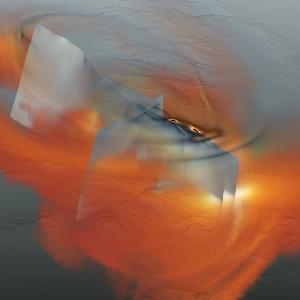Seismology: The dynamics of the Ridgecrest earthquakes
25 May 2023
Seismologists reveal complex dynamics of multi-fault earthquake systems
25 May 2023
Seismologists reveal complex dynamics of multi-fault earthquake systems

Animation of the Magnitude 7.1 Ridgecrest earthquake | © T.Taufiqurrahman and A.Gabriel
The Ridgecrest earthquakes that struck Southern California on July 4 and 5, 2019, were the strongest in the region in 20 years, with magnitudes of 6.4 and 7.1, respectively. Up to now, it is still a matter of debate why both large earthquakes were separated by about 34 hours, which fault segments actively slipped, and which regional conditions promoted the occurrence of the
earthquake cascade.
A team of seismologists led by Professor Alice-Agnes Gabriel (LMU and Scripps Institution of Oceanography at UC San Diego) has now analyzed the complex dynamics of the quakes in detail using the supercomputer SuperMUC-NG. As the researchers report in the journal Nature, the two quakes were indeed connected. The earthquakes interacted via a statically strong yet dynamically weak fault system characterized by complex fault. According to the authors, their models can help to improve the assessment of seismic hazards in active multiple-fault systems, which are often underestimated.
Taufiq Taufiqurrahman, Alice-Agnes Gabriel, Duo Li, Thomas Ulrich, Bo Li, Sara Carena, Alessandro Verdecchia, František Gallovič: Dynamics, interactions and delays of the 2019 Ridgecrest rupture sequence. Nature 2023